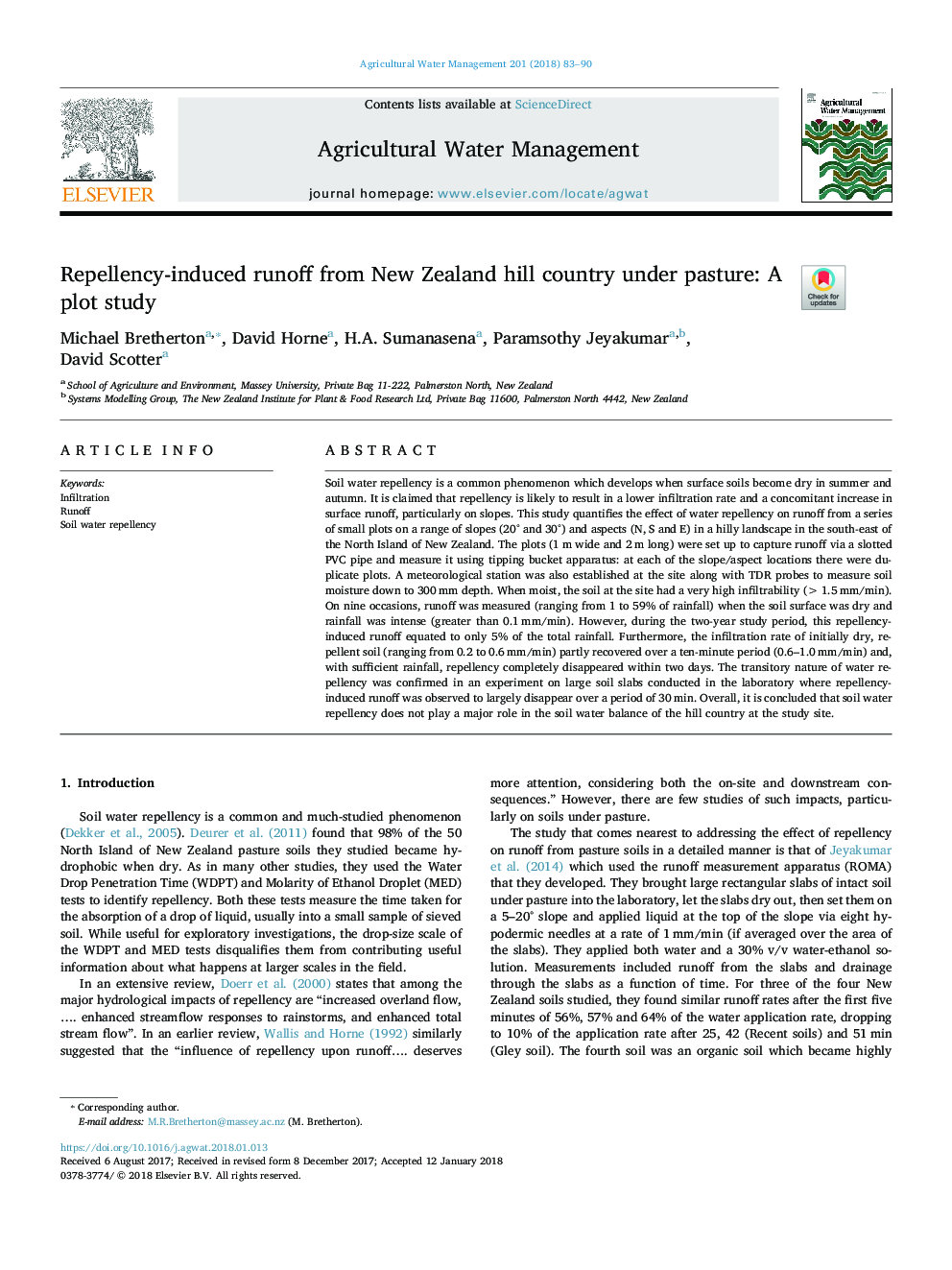| Article ID | Journal | Published Year | Pages | File Type |
|---|---|---|---|---|
| 8873064 | Agricultural Water Management | 2018 | 8 Pages |
Abstract
Soil water repellency is a common phenomenon which develops when surface soils become dry in summer and autumn. It is claimed that repellency is likely to result in a lower infiltration rate and a concomitant increase in surface runoff, particularly on slopes. This study quantifies the effect of water repellency on runoff from a series of small plots on a range of slopes (20° and 30°) and aspects (N, S and E) in a hilly landscape in the south-east of the North Island of New Zealand. The plots (1â¯m wide and 2â¯m long) were set up to capture runoff via a slotted PVC pipe and measure it using tipping bucket apparatus: at each of the slope/aspect locations there were duplicate plots. A meteorological station was also established at the site along with TDR probes to measure soil moisture down to 300â¯mm depth. When moist, the soil at the site had a very high infiltrability (>1.5â¯mm/min). On nine occasions, runoff was measured (ranging from 1 to 59% of rainfall) when the soil surface was dry and rainfall was intense (greater than 0.1â¯mm/min). However, during the two-year study period, this repellency-induced runoff equated to only 5% of the total rainfall. Furthermore, the infiltration rate of initially dry, repellent soil (ranging from 0.2 to 0.6â¯mm/min) partly recovered over a ten-minute period (0.6-1.0â¯mm/min) and, with sufficient rainfall, repellency completely disappeared within two days. The transitory nature of water repellency was confirmed in an experiment on large soil slabs conducted in the laboratory where repellency-induced runoff was observed to largely disappear over a period of 30â¯min. Overall, it is concluded that soil water repellency does not play a major role in the soil water balance of the hill country at the study site.
Related Topics
Life Sciences
Agricultural and Biological Sciences
Agronomy and Crop Science
Authors
Michael Bretherton, David Horne, H.A. Sumanasena, Paramsothy Jeyakumar, David Scotter,
